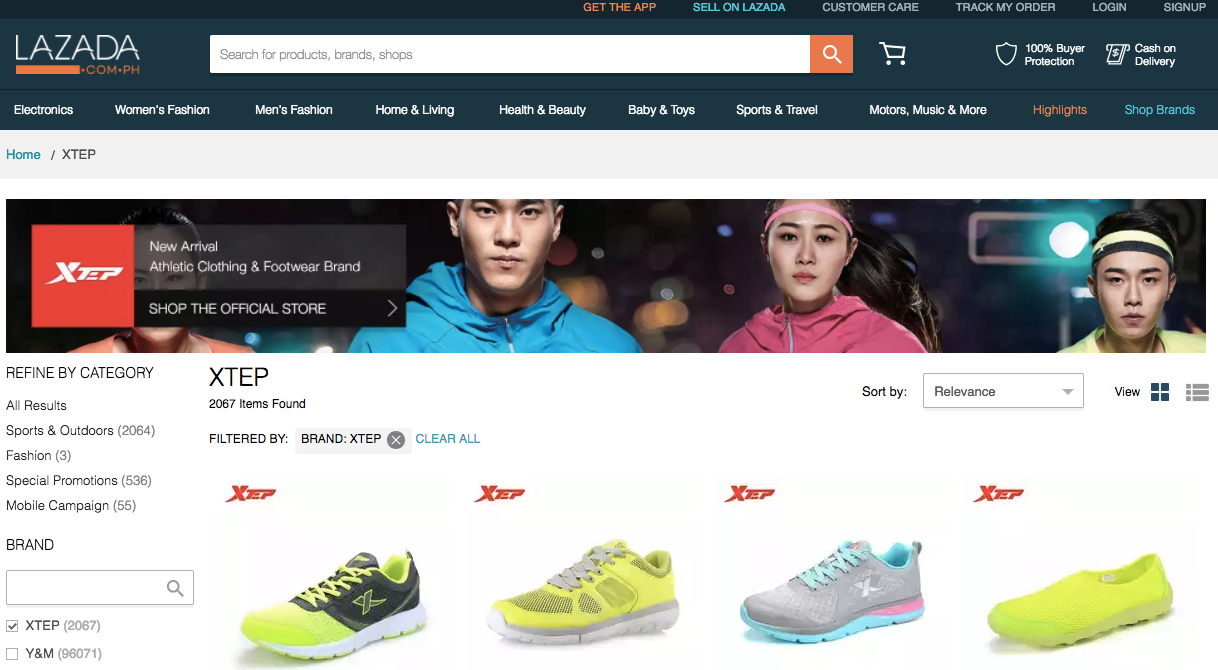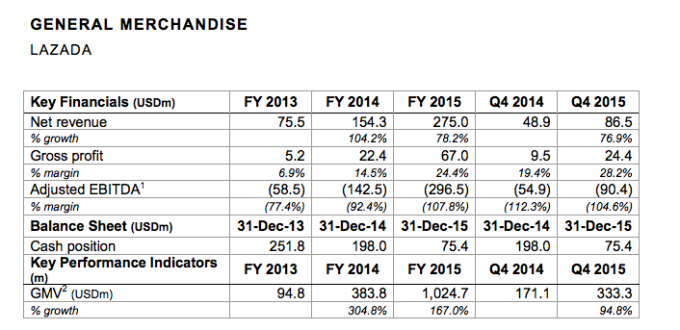
Lazada boss Maximilian Bittner. He built up Lazada as part of the Rocket Internet empire before the Alibaba sale. Photo credit: Lazada.
Before Jack Ma started Alibaba, he was a teacher. Decades later, he still is.
Maximilian Bittner, CEO of Southeast Asian ecommerce bigwig Lazada, recounts a conversation with Jack after Alibaba’s acquisition of his company, which valued it at US$1.5 billion.
Jack got excited by how youthful the Lazadians were, and how he could share his knowledge with them.
Lazada will need a lot of lessons. Yes, it claims to be the undisputed ecommerce leader in Southeast Asia. It’s in pole position in five of its six markets, “by any metric,” says Max (Carousell declined to comment; Tokopedia did not respond to repeated requests from Tech in Asia).
But Lazada is about to have the fight of its life. Amazon’s looming on the horizon: it’s set to break into Southeast Asia this year.
The partnership with Alibaba, Lazada hopes, will deepen its moat through unprecedented integrations with Jack’s vast empire.
Efforts are already underway, turning Lazada into a global marketplace instead of just a Southeast Asian one.
Making Lazada and Alibaba one
Logistics is the unseen backbone of ecommerce. That’s why the integration between Alibaba’s logistics arm, Cainiao Network, and Lazada may be the most important piece of the puzzle.
Lazada has begun doing deliveries for Taobao, Alibaba’s consumer-to-consumer marketplace, in Malaysia.
It’s testing cross-border trade, not just within Southeast Asia (allowing a merchant in Malaysia to sell to Indonesia, for example), but also between Lazada and Tmall Global, a program which helps foreign brands access Chinese consumers.
“Let’s say a merchant from China wants to sell into Southeast Asia. Cainiao helps us with the first mile in China. The stuff gets aggregated in our sortation house in Shenzhen. And then from there we take over and do the forwarding and injection into our local logistics network,” says Max. The reverse is happening too.
Brands benefiting from this arrangement include Singapore’s Motherswork, which is now sold on Tmall, as well as China’s Xtep, QCY, and Semir, which can be found on Lazada.

These moves could benefit both Alibaba and Lazada, increasing choice for consumers and giving merchants more reasons to sell on these marketplaces.
The caveat, though, is that this partnership is still nascent, so it’s unclear how big it’ll become.
Lazada has onboarded 20 Tmall brands on its marketplace, but does not reveal how many Southeast Asian brands it has helped to sell on Tmall. It also doesn’t disclose the volume of goods transported between Cainiao and Lazada.
Another question: how exactly would a brand benefit from listing on Tmall through Lazada (and vice-versa), rather than attempting to do it without their help? Lazada doesn’t want to comment, as the program is still being piloted.
Cards close to his chest
He says Lazada is integrating its payments system Hellopay with Alipay, but doesn’t go into detail.
Max rufuses to comment on the actual sum that Lazada paid to buy Singapore online grocer RedMart, said to be between US$30 million to US$40 million.
“The transaction is what it is,” he says. “Garena is largely a gaming business, and I think they were not able to get the synergies out of the partnership between Redmart and them the way that they hoped.”
Lazada says it’s more compatible with the grocery startup, because they both focus on ecommerce logistics. Garena, which led Redmart’s series A and B rounds, thumbs down our request comment.
Max is working with Redmart to cut its delivery times down to between four to six hours this year. Lazada can also help Redmart expand to the region, though that depends on timing and finding the right business model.
Elephant in the room
Without a strong indigenous rival to Lazada, Amazon could be Lazada’s most formidable competitor yet, with its wide revenue streams and the ability to bundle up same-day and next-day ecommerce with its Netflix competitor Prime Video and its voice assistant Alexa.
Alibaba’s deep pockets will be useful. Max is now investing in growth rather than chasing profitability. He’s doubling Lazada’s data science team to 60-plus people.
Lazada has not publicly revealed financials since the acquisition, and Max doesn’t disclose them either. But he says that Lazada grew its number of fulfilled orders by almost 2.5 times in 2016 compared to the previous year.

While Max doesn’t know exactly how Amazon will expand to Southeast Asia, he expects them to do some sort of a Prime Now model, which is a subscription service offering same-day delivery of meals, groceries, and essentials within one to two hours.
Max is keeping quiet about whether Lazada will start a subscription service. Yet he thinks it will be able to match up to Amazon in customer experience.
“On the logistics side, we are focused on being an enabler, maybe even more than Amazon because we also focus on the last mile and they don’t historically do that. And that’s especially important when you go outside of Singapore.”
But Amazon can change – and has. It’s investing in airplanes and trucks in the US. It’s in a position to win India by being adaptable. It built its own last-mile network because the country lacked one.
Lazada’s headstart gives it an edge. Now it needs to make sure it becomes the next Alibaba, not the next Snapdeal.
This post With the Lazada-Alibaba marriage, is it game over for rivals? appeared first on Tech in Asia.
from Tech in Asia https://www.techinasia.com/amazon-lazada-game-over
via IFTTT
No comments:
Post a Comment